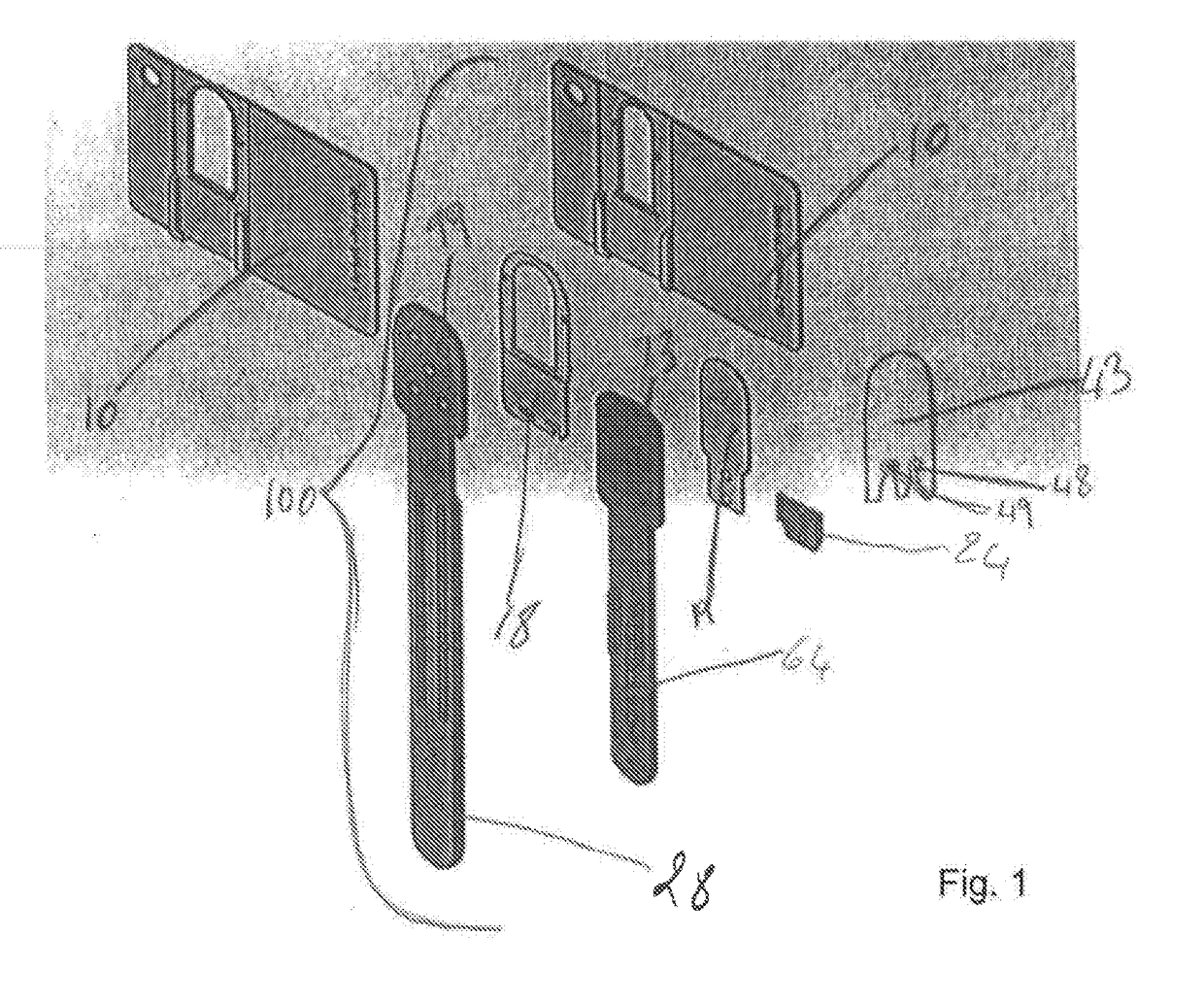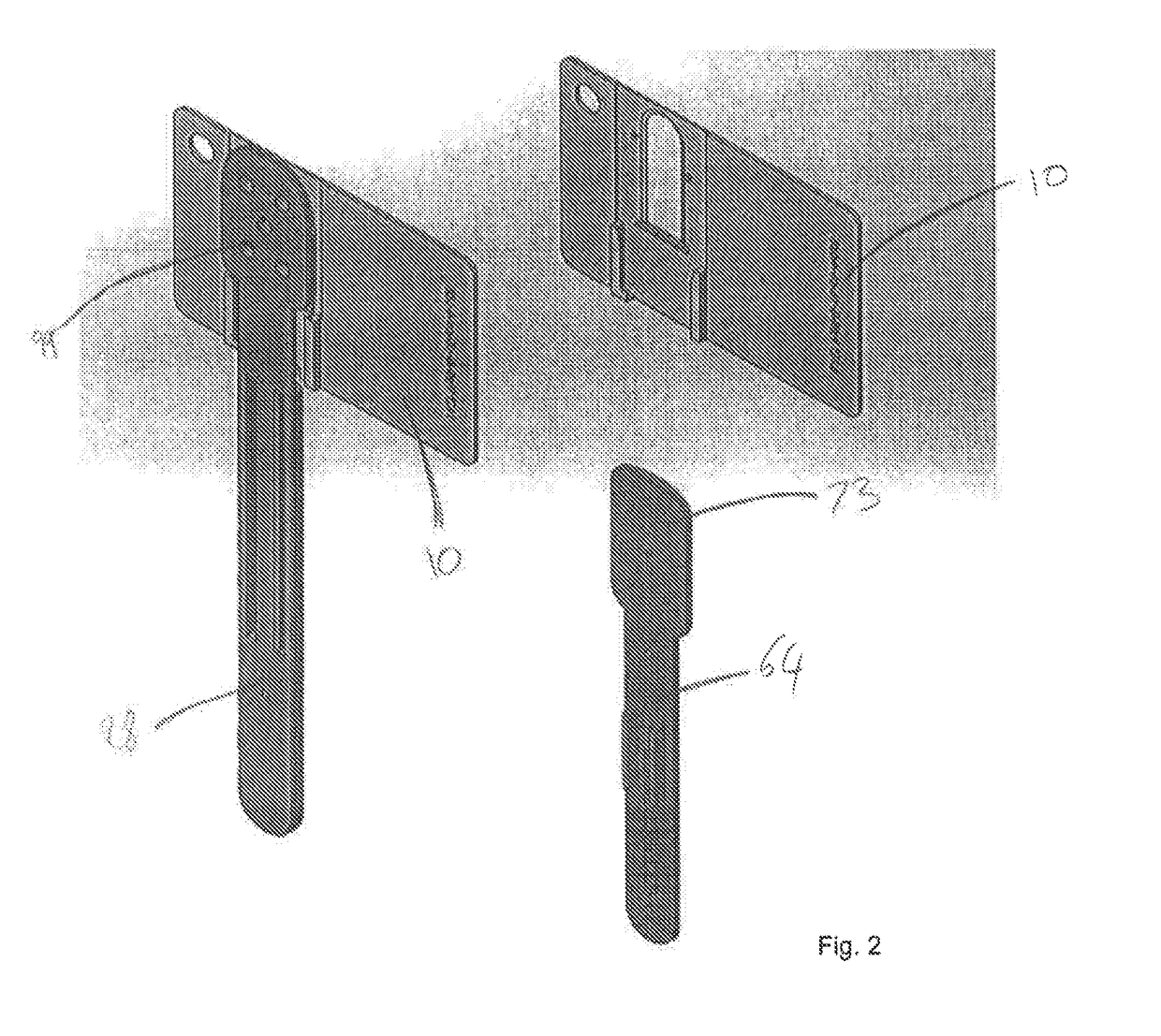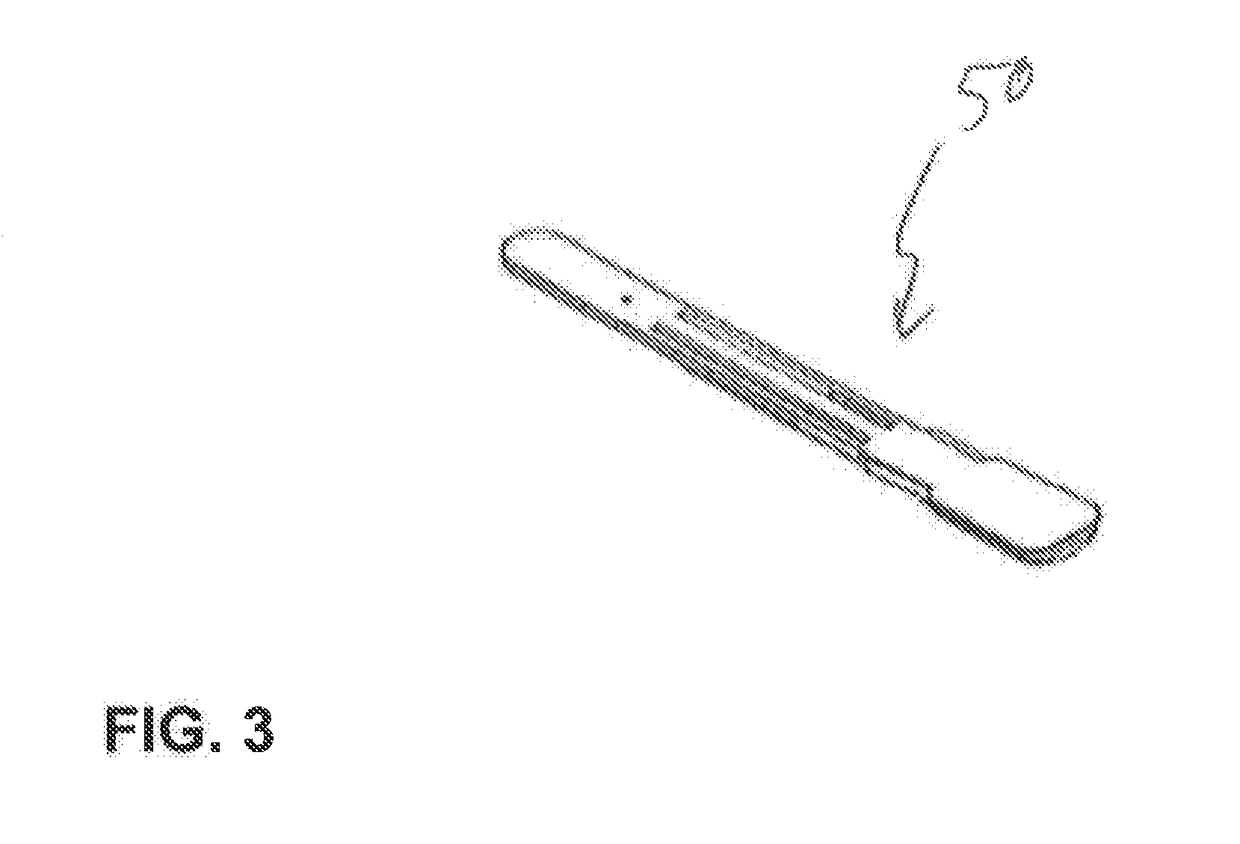Direct specimen collection device and cassette
a collection device and specimen technology, applied in the field of direct specimen collection devices and cassettes, can solve the problems of uncooperative people, lack of visual characteristics, and often taken samples from living people, and achieve the effect of efficient drying of collected specimens
- Summary
- Abstract
- Description
- Claims
- Application Information
AI Technical Summary
Benefits of technology
Problems solved by technology
Method used
Image
Examples
example 1
Collection of Evidence at a Crime Scene
[0079]The user of the collection device will retrieve the collection components from sterile primary packaging of the device. The sample collector and the cassette of the sample collection device may come packaged together, or they may be packaged separately. The specimen collector 50 may have the specimen collection assembly 35 and the slider 64 pre-attached to the handle cover 28. Alternatively, the user may attach the handle cover 28 to the specimen collection assembly 35, and attach the slider 64 to the handle cover 28. Any protective film or packaging covering the collection absorbent may be removed using sterile techniques (e.g., wearing sterile gloves, handling with sterile precautions, etc.). The user may then slide the slider 64 down to expose the collection absorbent 19, and contact the collection absorbent 19 to surfaces having potential evidence or biological samples for collection. If the user desires to collect a biological sample...
PUM
| Property | Measurement | Unit |
|---|---|---|
| thickness | aaaaa | aaaaa |
| width | aaaaa | aaaaa |
| length | aaaaa | aaaaa |
Abstract
Description
Claims
Application Information
 Login to View More
Login to View More - R&D
- Intellectual Property
- Life Sciences
- Materials
- Tech Scout
- Unparalleled Data Quality
- Higher Quality Content
- 60% Fewer Hallucinations
Browse by: Latest US Patents, China's latest patents, Technical Efficacy Thesaurus, Application Domain, Technology Topic, Popular Technical Reports.
© 2025 PatSnap. All rights reserved.Legal|Privacy policy|Modern Slavery Act Transparency Statement|Sitemap|About US| Contact US: help@patsnap.com



